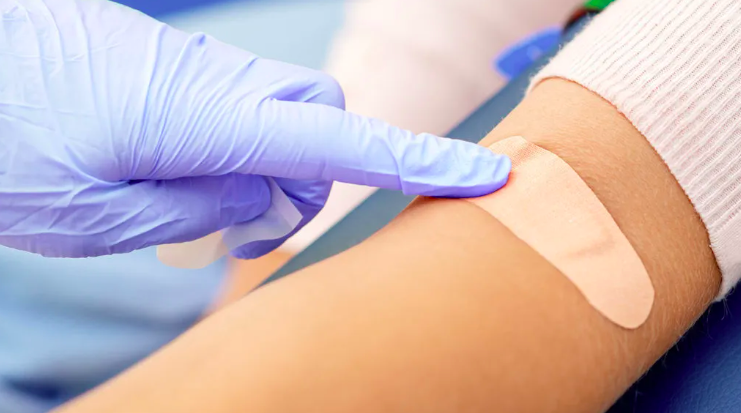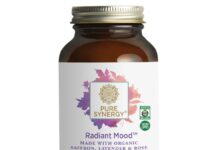Vitamin D, also known as the sunshine vitamin, is a fat-soluble vitamin that is made by our body in the form of hormones, and we also receive it from the food we eat. But the biggest source known for vitamin D is direct sunlight. Sitting under the sun for 15 minutes can provide an ample amount of vitamin D to keep you running throughout the day.
Many people have insufficient amounts of this vitamin in their bodies. Since it is a fat-soluble vitamin, hence can be maintained for some time in our bodies. The main factor behind deficiency is a lack of exposure to sunlight. This insufficiency can result in serious illnesses. A vitamin D test is performed to determine the level of deficiency. In medical terms, this test is referred to as Vitamin d hydroxy 25.
Vitamin D Deficiency’s Consequences
It can trigger rickets in kids, as well as a loss of bone density and digestive difficulties. High blood pressure and heart disease are two more prevalent side effects of Vitamin D insufficiency found in later life.
There are additional immune system problems to be found. Diabetic [patients are more at risk since it hampers the process of healing a wound and can stop the recovery.
What Causes Vitamin D Deficiency?
There are several reasons for this. The underlying is a few of the many:
- Ageing is one of the so many reasons.
- The body struggles to synthesize vitamins after a certain age. Unsynthesysed Vitamin is of no use since it cannot be processed further. Hence, keeping your body well-functioning is crucial.
- Another reason is avoiding the sun. The sun delivers our everyday source of vitamin D. However, most people avoid the sun in various ways due to changing lifestyles and cultural customs.
- Long working hours with an unplanned diet is another cause.
- People with dark skin have more production of melanin than people with light skin, which leads to natural avoidance of sunlight. Hence they are more prone to this deficiency.
Characterized Symptoms:
Vitamin D deficiency affects the skin, bone, and overall internal system in a way that you can notice the changes:
- Muscle weakness
- bone discomfort, weariness, and sleep disturbances
- Sudden acne, skin rashes, and skin ageing are the most typical signs of Vitamin D deficiency.
A Vitamin D Test can also be used to detect this insufficiency. This vitamin D test is called the 25 Hydroxy vitamin D test. It is a self-reflective test showing the amount of vitamin d hydroxy 25 your body is synthesizing.
Need for vitamin d hydroxy 25:
Our body needs every Vitamin and mineral up to some range to maintain its functioning and mechanism. Here is why vitamin D is necessary for the body:
- It keeps your immune system strong and maintains bone health in good shape.
- Vitamin D hydroxy 25 promotes calcium absorption in the intestine and aids in the maintenance of normal calcium and phosphorus levels in the blood, both of which are necessary for maintaining good bone density.
- Vitamin D hydroxy 25 strengthens the immune system, making it more resistant to ailments such as diabetes, asthma, and arthritis.
The amount of vitamin D you require daily varies depending on your age.
Vitamin D sources
The sun is the biggest and most natural source of Vitamin D. When we are exposed to sunlight, our bodies synthesize vitamin D. UV rays produced by the sun must come into direct contact with our skin. Sunscreen functions as a barrier between your skin and the sun, limiting the reach of UV rays.
The Vitamin is processed by our kidneys and converted to vitamin D hydroxy 25. Hence, Vitamin D-rich foods can also provide the needed vitamin D hydroxy 25.
Vitamin D is found in
- Oily fish
- Red meat
- Liver
- Egg yolk
- Mushrooms
- Cheese
There are more Vitamin D supplements that doctors suggest maintaining your daily intake.
Vitamin D deficiency Detection Test
Vitamin D hydroxy 25 test is another name for Vitamin D Test. It is the most often used method of determining insufficiency. During venepuncture, blood is extracted from a vein on the inside of the elbow or the back of the hand. This blood test for vitamin D hydroxy 25 is used to evaluate your body’s quantity of vitamin D.
Test Result:
Vitamin d hydroxy 25 test shows the amount of vitamin D present in your body.
The resulting range can be classified into four categories
- Over presence: 125 nmol/l or more
- Sufficient: 50–125 nmol/l
- risk of inadequacy: 30–49 nmol/l
- Borderline Deficiency: 30 nmol/l or less.
- Deficiency: Less than 20
This result can help doctors determine how to maintain the required level of Vitamin d hydroxy 25 in your body. Multivitamins, a good diet, and sunlight can be very helpful.








